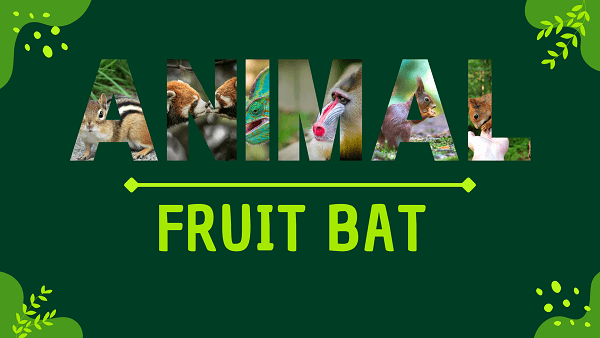Fruit Bat Overview
Appearance
The fruit bat, also known as a flying fox, is a large bat species with a broad wingspan and a distinctive fox-like face. Its fur can range from reddish-brown to black, and its eyes are large and round.
Fruit bats possess sharp claws adapted for hanging upside-down from branches, and they have well-developed senses of sight and smell. Their wide wings allow for agile flight, making them well-suited for navigating through forests and open spaces.
Origins And Evolution
Fruit bats belong to the family Pteropodidae and have evolved over millions of years to become proficient fruit eaters. Originating in tropical regions of Africa, Asia, Australia, and the Pacific Islands, they have adapted to diverse habitats from rainforests to urban environments.
Their evolutionary journey is closely tied to their fruit-based diet, leading to specialized dental structures for consuming pulp and seeds. With a significant role as pollinators and seed dispersers, fruit bats have shaped the ecosystems they inhabit.
Their coexistence with various plant species showcases their intricate ecological connections and the importance of their conservation for maintaining biodiversity.
Behavior and Lifestyle
Fruit bats, also known as flying foxes, are nocturnal creatures with a penchant for fruit consumption. They are highly social animals, often roosting in large colonies during the day. With excellent vision and a keen sense of smell, they locate ripe fruits while flying through the night.
Their agile flight patterns allow them to navigate densely vegetated areas in search of food. Fruit bats play a vital role in ecosystems as pollinators and seed dispersers, contributing to the health and diversity of plant life.
Scientific Classification
- Kingdom: Animalia
- Phylum: Chordata
- Class: Mammalia
- Order: Chiroptera
- Family: Pteropodidae
Locations
- Africa
- Asia
- Australia
- Pacific Islands
- South America
- Central America
Fast Facts
- Name: Fruit Bat
- Scientific Name: Pteropodidae
- Habitat: Tropical forests
- Diet: Fruits and nectar
- Physical Features: Large wingspan
- Nocturnal: Active at night
- Solitary: Often roost alone
- Unique Order: Chiroptera
- Lifespan: Up to 30 years
- Conservation Status: Varies by species
- Fun Facts: Excellent pollinators, use echolocation
Physical Characteristics
- Color: Variable shades
- Skin Type: Membranous wings
- Top Speed: Agile fliers
- Lifespan: Up to 30 years
- Weight: Lightweight bodies
- Length: Impressive wingspan
- Age of Sexual Maturity: Varies by species
- Age of Weaning: Relatively short
Fruit Bat FAQs
Do fruit bats only eat fruit?
Yes, fruit bats primarily consume fruits and nectar, which also makes them important pollinators and seed dispersers.
Are fruit bats active during the day or night?
Fruit bats are primarily nocturnal, being most active during the night.
Where can you find fruit bats?
Fruit bats are found in tropical and subtropical regions across Africa, Asia, Australia, and the Pacific Islands.
Are fruit bats social animals?
Yes, fruit bats are highly social and often roost in large colonies.
Do fruit bats hibernate?
Some species of fruit bats do hibernate, depending on their habitat and environmental conditions.
